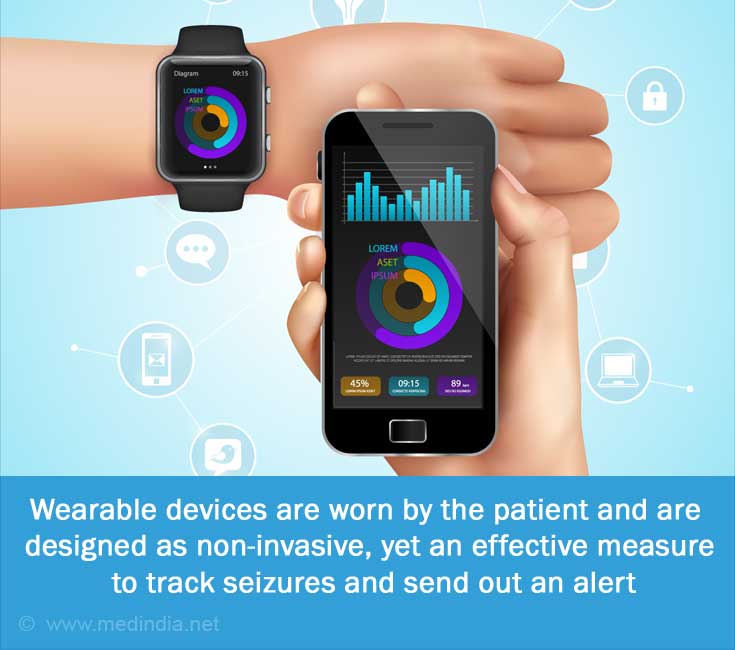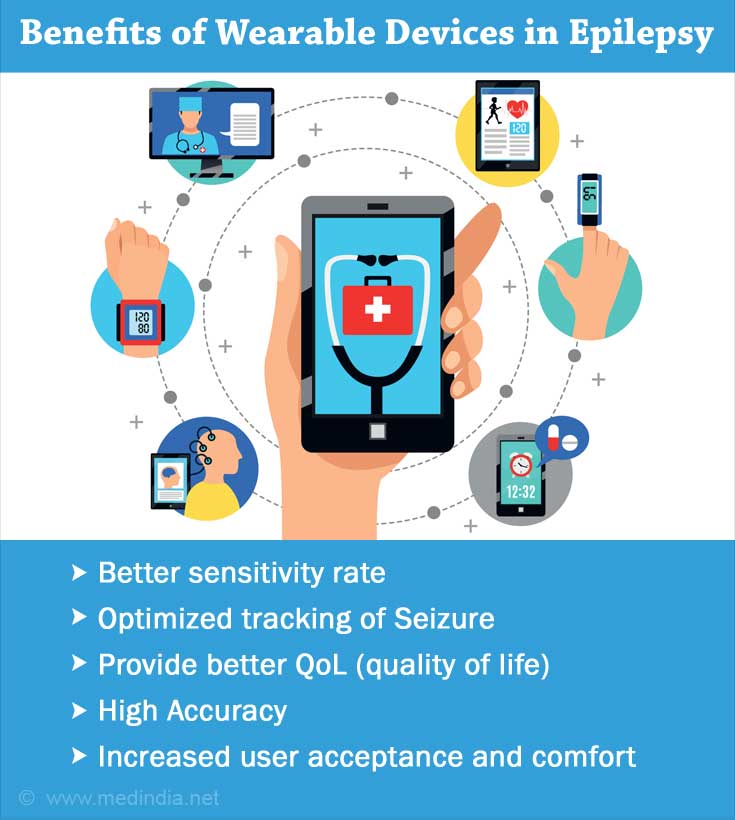- Preferences and User Experiences of Wearable Devices in Epilepsy - (https://n.neurology.org/content/early/2022/06/15/WNL.0000000000200794)
- Seizure detection using wearable sensors and machine learning: Setting a benchmark - (https://onlinelibrary.wiley.com/doi/full/10.1111/epi.16967)
- Sudden Unexpected Death in Epilepsy - (https://www.ncbi.nlm.nih.gov/books/NBK559104/)
- Seizure Diaries and Forecasting With Wearables: Epilepsy Monitoring Outside the Clinic - (https://www.ncbi.nlm.nih.gov/pmc/articles/PMC8315760/)
- Effects of Seizures on Autonomic and Cardiovascular Function - (https://www.ncbi.nlm.nih.gov/pmc/articles/PMC531654/#:~:text=Autonomic%20changes%20are%20the%20most,may%20predominate%20during%20partial%20seizures)
- Wristband detects and alerts for seizures, monitors stress - (https://news.mit.edu/2016/empatica-wristband-detects-alerts-seizures-monitors-stress-0309)
- Effects of Seizures on Autonomic and Cardiovascular Function - (https://www.ncbi.nlm.nih.gov/pmc/articles/PMC531654/#:~:text=Autonomic%20changes%20are%20the%20most,may %20predominate%20during%20partial%20seizures)
- Autonomic symptoms during epileptic seizures - (https://pubmed.ncbi.nlm.nih.gov/11679301/)
- A Wearable device for Continuous Detection and Screening of Epilepsy during Daily Life - (https://www.ijsdr.org/papers/IJSDR2003033.pdf)
- A new method for predicting epilepsy seizure - (https://www.researchgate.net/publication/282792727_A_new_method_for_predicting_epilepsy_seizure)
- Artificial Neural Network Based Epileptic Detection Using Time-Domain and Frequency-Domain Features - (https://www.researchgate.net/publication/7530326_Artificial_Neural_Network_Based_Epileptic_Detection_Using_Time-Domain_and_Frequency-Domain_Features)
- New Wearable Medical Tech Tracks More than Just Steps - (https://www.brainandlife.org/articles/wristbands-smartwatches-and-other-wearable-devices-allow-for-more-real)
Introduction
Wearable devices - with their routine usage are crafting a revolutionary change in the diagnosis and treatment of epilepsy. The FDA has recently cleared a device for routine use and more similar devices at reasonable costs are likely to appear in the market in the near future.
Understanding these recent developments is important for both the patients and the caregivers.
What are Wearable Devices?
Machine learning (ML) and Artificial Intelligence (AI) techniques through cloud technologies are gaining potential insights into designing non-invasive, real-time health trackers that aid in the continuous monitoring of health and disease(1✔ ✔Trusted Source
Preferences and User Experiences of Wearable Devices in Epilepsy
Go to source). These applications work by capturing the body signals that are concomitant with specific diseases, thereby improving the diagnosis and treatment of the diseases.
The multi-model and custom-developed approach in algorithms has allowed for the evolution of wireless, miniaturized gadgets that help in better tracking of real-time seizure onsets and patterns - crucial for epilepsy management(2✔ ✔Trusted Source
Seizure detection using wearable sensors and machine learning: Setting a benchmark
Go to source).
Amongst these, wearable devices (wearable technology, designed for use while being worn) have emerged as a non-invasive, inexpensive yet effective measure of detecting, and recording seizures, and forewarning caregivers(3✔ ✔Trusted Source
Seizure Diaries and Forecasting With Wearables: Epilepsy Monitoring Outside the Clinic
Go to source).
What is Epilepsy?
Epilepsy is a progressive neurological disorder characterized by sudden, unprovoked, recurrent attacks of seizures or convulsions with or without loss of consciousness, due to hypersynchronous, abnormal bursts of electrical activity in the brain(4✔ ✔Trusted Source
A Wearable device for Continuous Detection and Screening of Epilepsy during Daily Life
Go to source).

Rising Burden of Epilepsy
There are various forms of epileptic seizures affecting over 65 million people globally with one in every third of epileptic patients having resistance to anti-seizure treatment(4✔ ✔Trusted Source
A Wearable device for Continuous Detection and Screening of Epilepsy during Daily Life
Go to source).
Certain forms of seizures may present with prior-warning signs or symptoms (aura) but others may occur with almost little or no warning, thereby adding to their burden and morbidity(1✔ ✔Trusted Source
Preferences and User Experiences of Wearable Devices in Epilepsy
Go to source). It is thereby congruently critical to address the increased mortality risk from repeated seizure attacks as it may lead to SUDEP (Sudden Unexpected Death in Epilepsy)(5✔ ✔Trusted Source
Wristband detects and alerts for seizures, monitors stress
Go to source, 6✔ ✔Trusted Source
Sudden Unexpected Death in Epilepsy
Go to source).
SUDEP
Sudden Unexpected Death in Epilepsy - is a fatal complication of epilepsy defined as "death in a patient with epilepsy that is not due to trauma, drowning, status epilepticus, or other known causes but for which there is often evidence of an associated seizure"(6✔ ✔Trusted Source
Sudden Unexpected Death in Epilepsy
Go to source). This occurs due to complications such as aspiration during a seizure. It is estimated that 1 out of 1,000 people with epilepsy die annually as per The Centers for Disease Control and Prevention (CDC)(5✔ ✔Trusted Source
Wristband detects and alerts for seizures, monitors stress
Go to source).

Newer Technology for Diagnosis and Treatment of Epilepsy
Conventional management of epilepsy relies upon clinical monitoring of seizures, non-invasive scalp electroencephalography (EEG), a witness from family or friends, or a record of seizure diaries(2✔ ✔Trusted Source
Seizure detection using wearable sensors and machine learning: Setting a benchmark
Go to source). However, these approaches may often slip in detecting seizures, mandating better and more appropriate long-term ambulatory monitoring systems(7✔ ✔Trusted Source
Effects of Seizures on Autonomic and Cardiovascular Function
Go to source).
Various types of epilepsies trigger the sympathetic nervous system, thereby leading to autonomic changes like abrupt fluctuations in heartbeat rate, autonomic respiratory reflexes, increased blood pressure, and involuntary changes in pupillary, cutaneous, gastrointestinal, urinary, and genital functions(2✔ ✔Trusted Source
Seizure detection using wearable sensors and machine learning: Setting a benchmark
Go to source, 7✔ ✔Trusted Source
Effects of Seizures on Autonomic and Cardiovascular Function
Go to source, 8✔ ✔Trusted Source
Autonomic symptoms during epileptic seizures
Go to source).
These diverse autonomic and functional manifestations of epilepsy open a newer window for tracking seizures through technological advancements thereby evolving its treatment and management strategies.
How Wearable Devices Can Help Detect Epilepsy?
Typically these wearable devices/sensors allow tracking of seizure episodes by collecting the various signals (autonomic and similar changes) from the human body that may help detect the occurrence of epilepsy disease and aid in precise treatment(2✔ ✔Trusted Source
Seizure detection using wearable sensors and machine learning: Setting a benchmark
Go to source).
This includes measurements via electrodermal activity (EDA — measures neurally mediated effects on sweat gland), accelerometry (records human motions, as evident during a seizure), electromyography (EMG — records the electrical activity of skeletal muscles), photoplethysmography (PPG — monitors heart rate)(2✔ ✔Trusted Source
Seizure detection using wearable sensors and machine learning: Setting a benchmark
Go to source, 3✔ ✔Trusted Source
Seizure Diaries and Forecasting With Wearables: Epilepsy Monitoring Outside the Clinic
Go to source), microelectromechanical systems (MEMS — predicts the muscular convolutions)(9✔ ✔Trusted Source
A Wearable device for Continuous Detection and Screening of Epilepsy during Daily Life
Go to source) and similar other coded body signals during a seizure that might be missed in a traditional clinical environment.

Ultimately, these wearable devices transmit these coded body signal that helps create control signals for switching an alarm device using wireless communication (GSM modem and GPS), and thereby trace the exact location of the patient for alerting their relatives, friends, and consulting doctors(9✔ ✔Trusted Source
A Wearable device for Continuous Detection and Screening of Epilepsy during Daily Life
Go to source).
How Far are we?
Some of the wearable devices that have been developed and those under the pipeline include the following:
- Empatica (co-founded by MIT professor and wearables pioneer Rosalind Picard) has developed a wristband, called Embrace, which monitors the occurrences of a seizure attack by tracking the coded body signals among the wearers(10✔ ✔Trusted Source
Wristband detects and alerts for seizures, monitors stress
Go to source). - Wearable/portable caps are available that collect real-time EEG records of patients with epilepsy by utilizing deep machine learning and analytical tools(9✔ ✔Trusted Source
A Wearable device for Continuous Detection and Screening of Epilepsy during Daily Life
Go to source). - CMOS-integrated devices have also been used for detecting epilepsy where a low-power detector is utilized to extract the time-to-time information on seizure onset from various body signals(11✔ ✔Trusted Source
A new method for predicting epilepsy seizure
Go to source). - Studies on multichannel EEG signals have also reported the use of artificial neural networks like the Elman network (EN) in the automatic detection of epileptic seizures(12✔ ✔Trusted Source
Artificial Neural Network Based Epileptic Detection Using Time-Domain and Frequency-Domain Features
Go to source). - Algorithms using the convolutional neural network are found to be highly attuned to detecting EEG-based brain activities with a more comprehensive and objective portrayal(9✔ ✔Trusted Source
A Wearable device for Continuous Detection and Screening of Epilepsy during Daily Life
Go to source). - Scientists at the Massachusetts Institute of Technology are now working on a watch that would help detect abnormal electrical signals during a seizure (especially in complex partial seizures) via measurement of changes in skin moisture(13✔ ✔Trusted Source
New Wearable Medical Tech Tracks More than Just Steps
Go to source). - BioStamp — a flexible adhesive sensor like a Band-Aid has been developed by MC10 (a startup in Cambridge, MA) that collects brain and muscle activity in epilepsy via wireless smartphone(13✔ ✔Trusted Source
New Wearable Medical Tech Tracks More than Just Steps
Go to source). - The use of long-lasting scalp electrodes, headbands, skullcaps, flexible bed sensors, and wristwatchesis also being developed as a potential tool for measuring early abnormal electrical changes in seizures(13✔ ✔Trusted Source
New Wearable Medical Tech Tracks More than Just Steps
Go to source).
Similar other devices have also been developed to detect various signs of seizure onsets and patterns.
Benefits of Wearable Devices in Epilepsy
Wearable devices can be used as a life-saving regime, especially in scenarios where epileptic patients present with seizures while driving, sleeping, or when in a remote area(9✔ ✔Trusted Source
A Wearable device for Continuous Detection and Screening of Epilepsy during Daily Life
Go to source). Some of the other benefits of wearable devices in epilepsy are the following:
- Better sensitivity rates in predicting seizures(9✔ ✔Trusted Source
A Wearable device for Continuous Detection and Screening of Epilepsy during Daily Life
Go to source). - Aid in optimized (objective data) yet cost-effective management of millions with epilepsy(9✔ ✔Trusted Source
A Wearable device for Continuous Detection and Screening of Epilepsy during Daily Life
Go to source). - Help track the remote location of the epileptic patients, which is beneficial in cases of a seizure attack(2✔ ✔Trusted Source
Seizure detection using wearable sensors and machine learning: Setting a benchmark
Go to source). - Allow for better mobility and QoL (quality of life) among patients with epilepsy through real-time prediction/tracking of the seizures(9✔ ✔Trusted Source
A Wearable device for Continuous Detection and Screening of Epilepsy during Daily Life
Go to source, 13✔ ✔Trusted Source
New Wearable Medical Tech Tracks More than Just Steps
Go to source). - Rising user acceptance due to comfort/ease of use and accuracy(1✔ ✔Trusted Source
Preferences and User Experiences of Wearable Devices in Epilepsy
Go to source).

Wearable Technology — a New Treatment Transition in Epilepsy?
Wearable technologies are emerging as promising and probabilistic forecasts for evaluating long-term seizures. Their potential may help clinicians in understanding the seizure risk factors at an individual level and thereby customizing their management accordingly.
Although wearable devices provide multiple benefits in the precision treatment and management of patients with epilepsy, faulty signal processing at times may lead to false/lag in the identification of epileptic seizures resulting in faulty/delayed treatment or death(9✔ ✔Trusted Source
A Wearable device for Continuous Detection and Screening of Epilepsy during Daily Life
Go to source).
It would be imperative to thereby outweigh the risks and benefits of newer technologies over conventional management and tailor the needs of patients with epilepsy.
"We are on the edge of obtaining, for the first time, a reliable and truly accurate record of seizure activity day or night using this (wearable technology) new technology," says Dr. Robert Fisher, MD, PhD, FAAN, the Maslah Saul MD professor of neurology and director of the Stanford University Epilepsy Center and a consultant for wearable technology companies(13✔ ✔Trusted Source
New Wearable Medical Tech Tracks More than Just Steps
Go to source).







